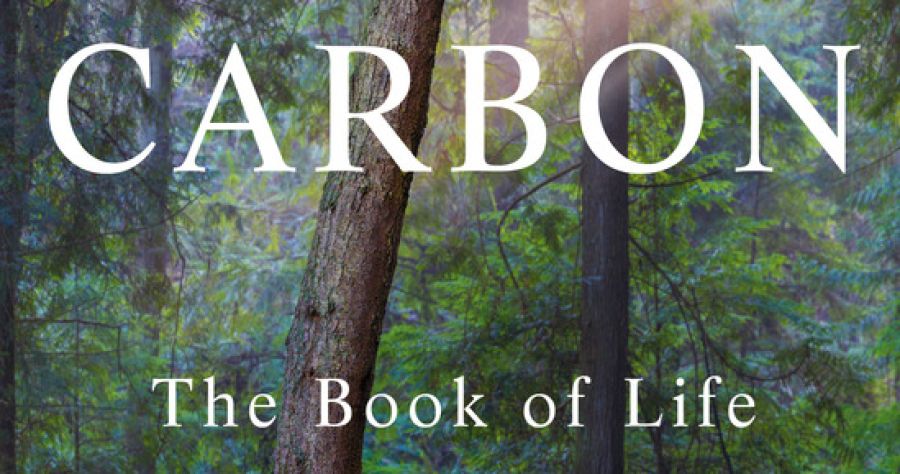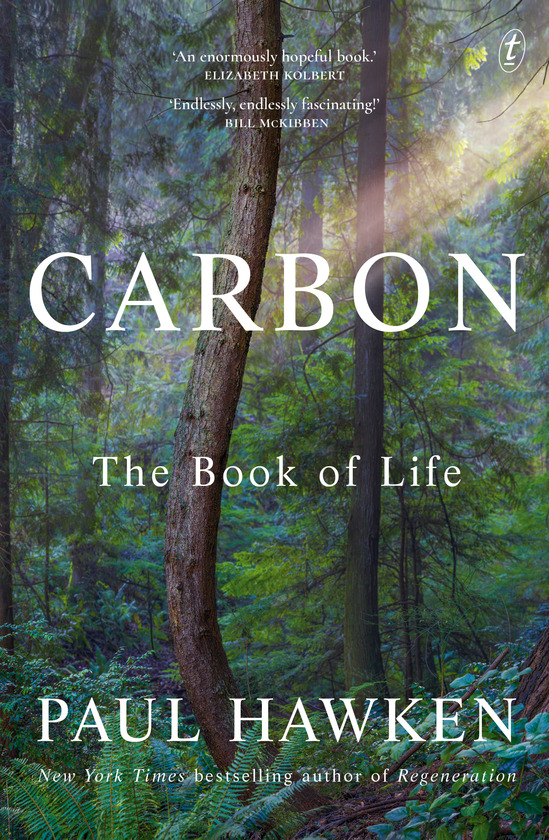
- Free Article: No
- Contents Category: Science
- Review Article: Yes
- Article Title: Particles of existence
- Article Subtitle: Carbon as the bearer of life
- Online Only: No
- Custom Highlight Text:
Carbon is, to quote Paul Hawken’s opening, ‘the narrator of lives born and lost’. It ‘organises, assembles, and builds … the most socially adept entrepreneur in the pantheon of life’. One could, with only a little exaggeration, apply this description to the author of Carbon: The book of life.
- Featured Image (400px * 250px):

- Alt Tag (Featured Image): Dave Witty reviews ‘Carbon: The book of life’ by Paul Hawken
- Book 1 Title: Carbon
- Book 1 Subtitle: The book of life
- Book 1 Biblio: Text Publishing, $34.99 pb, 243 pp
- Book 1 Cover Small (400 x 600):

- Book 1 Cover (800 x 1200):

- Book 1 Readings Link: https://www.readings.com.au/product/9781922268808/carbon--paul-hawken--2024--9781922268808#rac:jokjjzr6ly9m
Throughout a sixty-year career, Hawken has launched an array of successful businesses, websites, and books. Regeneration (2021), his previous book, has so far sold over two million copies. It is a particularly systematic work. Climate concerns and solutions are laid out under subheadings such as solar, biochar, vermiculture, and rewilding. If Regeneration was a landscape, it would be an allotment or a neatly tended garden. His latest book, by way of comparison, is more of a wilderness, fenceless and untamed.
Hawken has described Carbon as something of a public relations exercise, an attempt to resuscitate the reputation of a pariah element, one that has become a scapegoat for our modern ills. It brings to mind Nick Lane’s Oxygen (2002), a work that was similarly ambitious, the narrative drawing together several fields of study and spanning billions of years of evolution. But whereas Oxygen foregrounded the element’s toxicity (specifically, its role in ageing and cell damage), Hawken reminds us that carbon is the mother of all life: ‘the courier’, he writes, ‘coursing through every particle of our existence’.
I have heard Hawken describe his latest book as a love letter to carbon. ‘I want to be there in the book,’ he said in an interview with the Australian podcast Regen Narration. ‘I want it to feel like I showed up as opposed to, “I did a lot of research and I’m sharing it with you”.’
If that is the metric, then the book fails spectacularly, at least for the first thirteen chapters. A few personal reflections aside, the style defaults to one of random fact compressed upon random fact, the seemingly mismatched sentences attaching as easily as carbon bonds with other elements. There are cul-de-sac moments (the digressions, for instance, into language and phytoacoustics), and sentences which buckle under the weight of exhaustive lists. If he is inserting his presence into the book, it is not in any personal way; Carbon is more an insight into the hyper-intricate thought-trails of his brain.
Someone once suggested that readers of W. G. Sebald’s The Rings of Saturn (1995) should attempt a spider diagram of the book’s various themes. The discursive structure is so beguilingly complex that every reader’s web would be different. The same exercise could be performed with Carbon, and the same disparate results would ensue. My notes for one twenty-page section go from butterflies and the windshield effect to megaforests, soil, dung beetles, and ants via Mao Zedong, Chicxulub, and Scandinavian royalty. Compare that to the ABC documentary, Carbon: An Unauthorised Biography (2022), whose structure moved chronologically from the element’s origins to its role as life’s envoy to its appropriation by humans, disruptors par excellence, who plasticise it and burn it remorselessly for energy. ‘If you are to survive me,’ narrates Sarah Snook in that documentary, ‘you must understand me.’
It is, however, the confounding structure that turns out to be the twist in Carbon, the book. To understand carbon is to realise its complexity, to realise the almost infinite pathways it creates as it passes through the world.
For most of us, we recall the simplicity of the carbon cycle from biology textbooks, those seven or eight arrows showing carbon being burnt or exhaled and then gathering in the atmosphere only to descend after time, breathed in by plants or accepted by the ocean’s embrace. It is a dreamy, languorous journey, one that Primo Levi captures so exquisitely at the end of his short story collection, The Periodic Table (1975).
But this is only one part of the element’s repertoire. If we were to trace the movement of carbon atoms through their sacred earthly dance, through soils and plants, microbes and cells, the image would be akin to an accelerated Koyaanisqatsi-like time lapse. At one point, the ABC documentary graphically represents this movement by revealing the flow of carbon down a tree’s roots in bright purple strands. For every plant, there are millions of roots, each conjoined with multiple hyphae, fungal threads that exchange nutrients for carbon. By ploughing and degrading the land, we have ransacked these mycelial networks, breaking connections just as herbicides and pesticides impede the flow of carbon across farms and antibiotics disrupt our microbe diversity.
For all the disruption we have wrought, life, carbon, and its network of interactions are simply too complex for us to contemplate at once. This is the quandary set up by Hawken’s book. Fortunately, he provides an antidote, teeing up a simple question we should ask before enacting any changes to policy or practice: ‘does a solution, stratagem, or proposal create more life or less?’ In other words, does it improve carbon’s flow?
It is not long before the double-entry bookkeeping becomes confused. Bamboo, for example, might be an alternative to cutting down forests, but how much biodiversity would we destroy to plant twenty-five million acres of the crop, as he proposes in Chapter Seven? Simplicity aside, however, Hawken’s question is a valid starting point.
With the final two chapters, the book comes together and Hawken’s prose, so disjointed at times, coalesces and finds its rhythm and poise. The last chapter is a stand-out (and standalone) work, a rousing call-to-arms. We can all do our part to restore carbon’s flow, Hawken says, and his writing here is particularly inspirational. ‘The movement to restore life on Earth is not a repair job,’ he writes. ‘It is transformative, an entirely new experience of self.’ With these rallying words, Hawken is finally in his element.


Comments powered by CComment